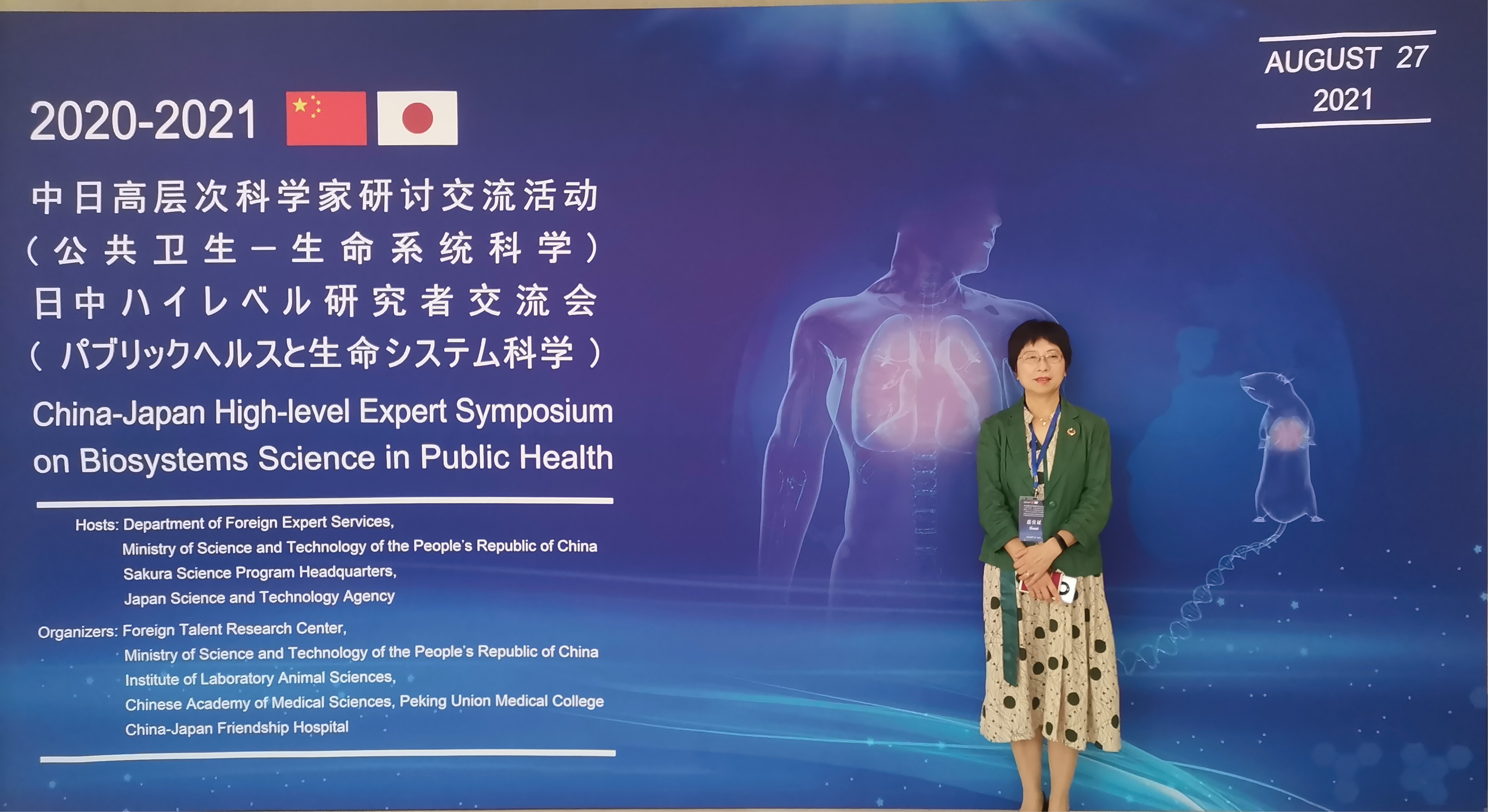More Communication and Exchanges: the Way to Sino-Japan Future Cooperation
By LONG Yun

Ms.Yoneyama Haruro is attending the China-Japan High-level Expert Symposium on Biosystems Science. (PHOTO: S&T Daily)
Speaking at the Symposium on Biosystems Science in Public Health in Beijing on August 27, Yoneyama Haruro, Counselor of the Japan Science and Technology Agency (JST) China, told S&T Daily that China and Japan are both East Asian Countries, geographically close to each other, and have compatible cultural contexts. "There is [therefore] no reason to set obstacles on our communication and exchanges between our two countries," she noted.
In addition, she expressed her expectations for China-Japan people-to-people exchanges to embrace a new era with more openness and mutual trust.
Yoneyama recalled JST's first contact with its China counterparts almost 16 years ago. She specially praised the efforts Okimura Kazuki, the former president of the JST, made to bridge the gap between the two countries through communications and exchanges. Okimura has always attached importance to encouraging young people from both countries to take part in exchange visits, underscoring the value the younger generation has in shaping future cooperation.
In terms of concrete initiatives, the JST serves as an active part in promoting Sino-Japanese sci-tech cooperation, she said. The Sakura Science Program began in 2014. It invites young people from China and other countries and regions to Japan for a short period of time, to meet up with Japanese youth and build strong relationships through interaction.
In 2016, Wan Gang, who was then Chinese Minister of Science and Technology, said the Sakura Science Program has strengthened the bonds between the young people of China and Japan. He initiated a program for young Japanese scientists to visit China, which was a big success.
Apart from the Sakura Science Program, the JST has established multidimensional cooperative platforms. The Sino-Japanese University Exhibition & Forum was introduced in 2010, and achieved satisfying results since then.
Yoneyama said another initiative taken by the JST was setting up two websites, "Objective Japan" in Chinese and "Science Portal China" in Japanese. These platforms served to provide sci-tech information to the general public, with PV (page views) of more than two million per month.
Compared with China's performance in the 1970s, she lauded the fact that "China today is much more open, active and inclusive in global cooperation," adding, "The scientists of the younger generation play an important role in engaging in bilateral people-to-people exchanges."
While applauding the active role young scientists have made in academic exchanges, Yoneyama also praised China's efficient way in organizing the symposium along with the hi-tech applications.
Hosted by the Department of Foreign Expert Services, Ministry of Science and Technology of China and Sakura Science Program Headquarters at JST, the event has successfully been held on five occasions since April 2019. Renowned experts from prestigious institutions in both countries are actively involved in sharing their research results and experience.
"We sincerely hope that this symposium will serve as a platform for more active, substantive and extensive sci-tech cooperation between China and Japan," said Yoneyama.
When asked about the expectation on future sci-tech cooperation between the two countries, she said there is a plan to promote exchanges between even younger children. "We aim to enable these younger children to establish a deep affection for each other from an early age, which will form a good foundation for their future sci-tech exchanges, as well as cultural exchanges." In addition to this, she still calls for more face-to-face communication and field trips, which provide more in-person experience on advanced facilities and excellent practices in China and Japan.
"We see the readiness of China to prepare itself for global sci-tech exchanges without being much influenced by political factors," she said, adding that China has done well in this regard and made itself a leading character in the world.

